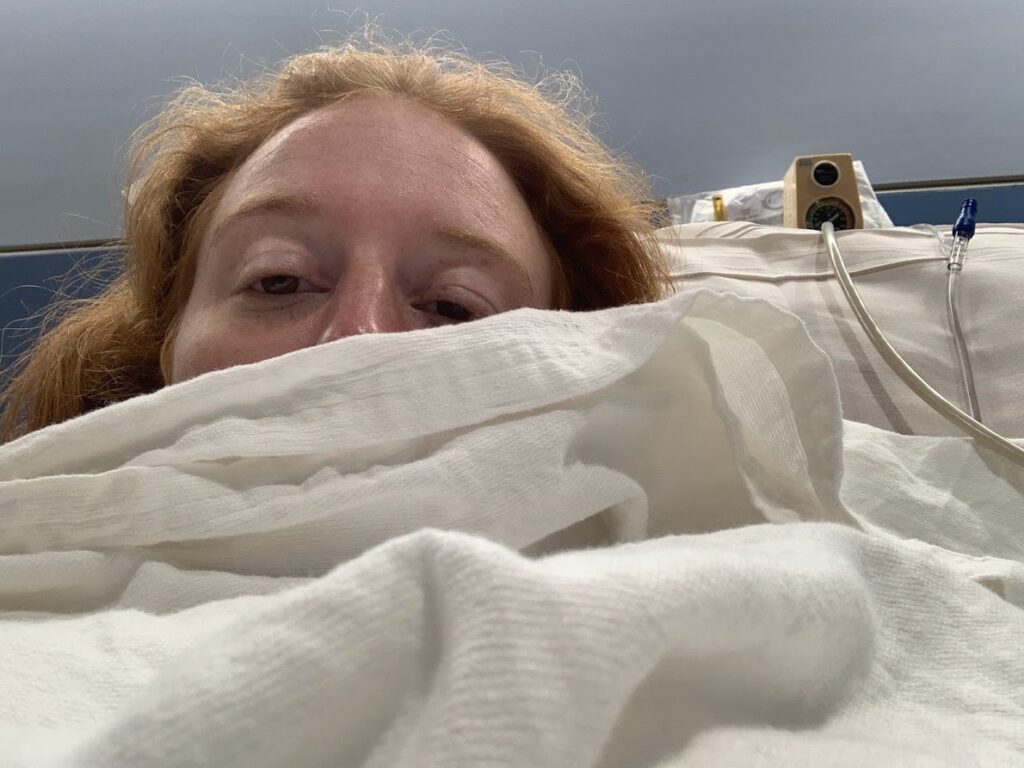
I slowly prop myself up in bed, trying not to use my right leg or even lift my hips at all. Pain still shoots through the site of my recent surgery as I struggle to get used to the mobility restrictions. “Dammit,” I curse to no one in particular. Once I’m finally seated somewhat upright, I pick up my leg with my hands and carefully swing it to the side of the bed. The crutches leaning on the wall next to the bed are ready to help conquer the trip across the room to the toilet.
My hip labral tear surgery was only two days ago, so this struggle is to be expected. I can’t sit fully upright. I can’t walk by myself. I can’t drive. I can’t even put my own socks or shoes on. Never have I ever felt so weak, but I know it will be worth it.
The injury happened over a year ago, in July 2020. I had foolishly taken a Motrin during an ultramarathon to avoid the altitude headache. This had also completely masked the signs my body was giving me to tell me something else was wrong. By the time the pills had worn off, it was too late.
After the race, I rested as hard as I could. Soreness was to be expected, but the pain in my hip was beyond that. When it became clear that I wasn’t going to get better on my own, I went straight to a physical therapist. Without any imaging, she determined that I had tendonitis. I went through seven weeks of PT with her before I had to accept that it still wasn’t getting better.
The next year was filled with sacrifice. I stopped trying to run or hike altogether. I couldn’t ski quite as hard, or the pain would keep me up at night. Losing running was hard. It was like I had lost my identity, and I struggled mentally as well as physically. I was back and forth between the orthopedic, a massage therapist, and a different physical therapist. They determined that I actually had torn the labrum in my hip and laid out a treatment plan. After two cortisone shots and four more months of PT, I found myself back in the orthopedics office. Everyday activities were getting easier but I still couldn’t run. My doctor agreed that surgery would finally correct the tear so I can get back to doing what I love.
It was a more difficult decision to make than I thought it would be. I wouldn’t be able to do anything active for six months, which meant I’d miss the entire ski season. I’ve sacrificed so much already though, what was one more season? I pulled the trigger and set up a date for surgery just two weeks after the doctor had given the go-ahead.
The last thing I remember before going into the OR, is the nurse putting the anesthesia through my IV and then wheeling me away towards the double doors of my future. Everything went wavy, and I said, “wow that worked fast,” before promptly passing out. The next thing I knew, I was waking up in the recovery room, with four or five other health care workers around me. My hip was killing me. They gave me some more pain medication for it, removed my IV, and called a physical therapist over to help teach me how to get around with my new restrictions. My doctor had done his job, now it is time for me to do mine.
The first time I tried to stand up, I felt like I was about to pass out. The PT forced me to take it slow and had me sit back down. The second attempt was much more successful, and the pain medication had started to work. I took the first of many crutch steps towards recovery.
For now, I’ll be staying with my family so I can recover as well as possible. The best part about having surgery is that there’s a definitive time for recovery. I know that I’ll be back at it in six months, and that light at the end of the tunnel is essential for staying positive. While my brother is out on deployment, I have taken over his basement bedroom. There are numerous people surrounding me already, and I am so grateful for everyone in my life right now who has offered their help. I couldn’t do this without them. I can’t wait to be back to being myself again.



I’m so sorry that you are having to go through this fight with your body. I do know that you are the Spitfire and clearly one of the most determined people that I know,so you will come out of this as strong as ever.
I’m in California doing some desert hiking but I will be home soon and if there is anything that I can do to help. I will be in touch… Carpenter.
Can’t keep a Badass down! Speedy recovery wishes sent your way. Ask for help, do your job, rest.